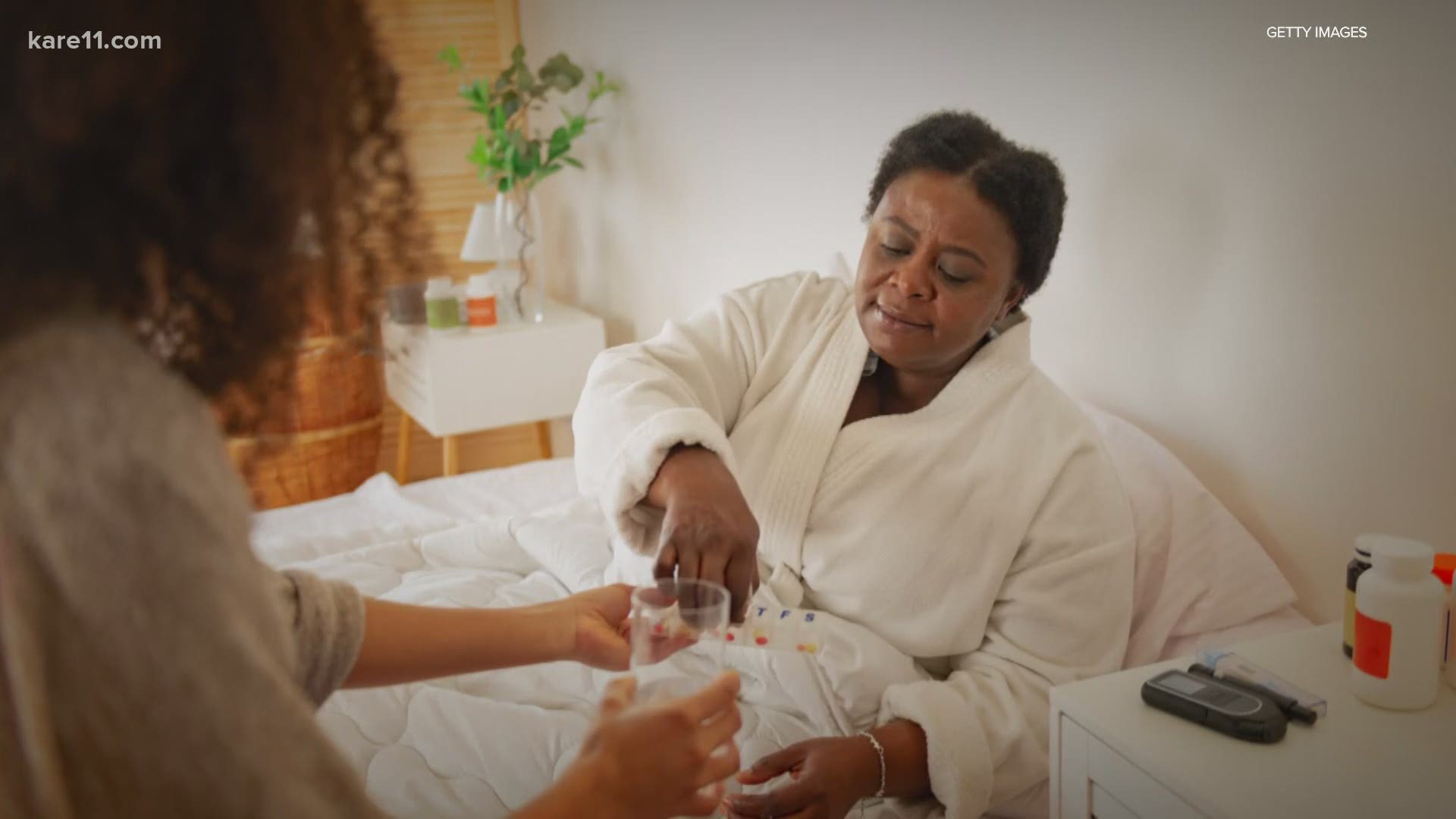The Minnesota Department of Health is loosening restrictions in long-term care settings, allowing loved ones back in as "essential caregivers."
According to the new guidance released Friday, long-term care facilities can now designate essential caregivers to help provide care to residents. Those people can be family, friends or volunteers. Each resident can be assigned more than one caregiver.
"People designated as essential caregivers will have expanded access to help ensure that the residents’ full range of emotional, social and physical needs are met," MDH said in a news release.
For about four months, the state has closed long-term care facilities to visitors to help fight the spread of COVID-19. On June 18, MDH began allowing window visits and outdoor visits with some limitations.
This new guidance will help facilities balance COVID-19 prevention with the general well-being of residents to limit the harms of social isolation, according to MDH.
“These restrictions have come with their own cost," MDH Commissioner Jan Malcolm said on a briefing call Friday. "Balancing safety from COVID-19 with the well-being of residents is an urgent priority for all of us."
Malcolm said they are talking through possibilities for expanding activities and visitations for residents, but this guidance is a first step.
"It’s important to note that this guidance does not include all visitors who wish to visit who may not meet the guidelines for essential caregivers," Malcolm said.
Essential caregivers will be family members, outside caregivers, friends or volunteers who have a connection with the resident.
“Someone who has provided regular care and support to the resident before or during the pandemic," Malcolm said.
Providers are asked to talk with their residents to help determine who should be designated as an essential caregiver. Policies for identifying and using these roles need to be established by July 25.
The caregivers will be subject to the same screening as facility staff and must wash their hands frequently and wear personal protective equipment like masks and eye protection. Facilities can restrict access if the caregiver does not follow infection prevention rules.
"We encourage testing on all fronts" but are not currently requiring testing for essential caregivers, Malcolm said.
RELATED: MDH Commissioner Malcolm weighs in on 'Window Visit' guidelines and cost of ongoing separation
Cheryl Hennen, State Ombudsman for Long-term Care on the Minnesota Board on Aging, said the guidance is "very significant" and her office stands ready to help facilities navigate it.
“People are suffering and they’re dying from COVID-19 but also from loneliness,” Hennen said.
She said they’ve heard reports of people refusing to bathe or eat.
“They feel they’d rather be leaving the earth.”
Gayle Kvenvold, CEO of LeadingAge Minnesota, said her organization has seen the effects of isolation as well.
"We know and we see every day that prolonged physical separation takes an emotional and psychological toll as well as affecting overall health," she said.
Kvenvold called on all Minnesotans to follow public health guidelines to help protect long-term care communities.
Patti Cullen, CEO of Care Providers of Minnesota, said this is an example of the state "turning the dial."
"This is kind of the next step in the progression. It is not intended … for everyone, that the door’s open, come on in," she said. "We are not ready to turn the dial even further, but we appreciate what this step will allow in many of our communities.”
Cullen cautioned that the policies around this new guidance are complex, and the screenings, personal protective equipment and training are important.
"We need to make sure that we do this right, so that we are not closing the doors again," she said. "Don't do what you used to do. ... We're not going back to that normal, and so retraining is gonna be a critical part of this."
Cullen said they've already had family members calling and asking if they can visit. She asked those people to be patient as they figure out these policies.
Malcolm said MDH will be prepared to pause the essential caregiver program at facilities where it becomes unsafe.
"We are going to be very much mindful of the situation statewide and locally for making sure that we can maintain this appropriate balance between safety and increasing support and choice for residents and families."
Elder Voice Family Advocates Executive Director Kristine Sundberg, whose organization gave input to the state on the guidelines, said she's "thrilled" that essential caregivers will be allowed inside the facilities. The presence of a family member or friend may relieve dire loneliness, particularly for people with memory problems.
“The isolation is torture," Sundberg said. "And even beyond torture, it is resulting in such a degradation of overall physical and emotional well-being.”
Sundberg said the guidelines are a good start, but she'd like the state legislature to create a firmer law when it meets in a special session next week.
“Guidelines are permissive. And there are too many facilities out there that just won’t do these things," Sundberg said. "But if it’s in law then they have to do it.”

